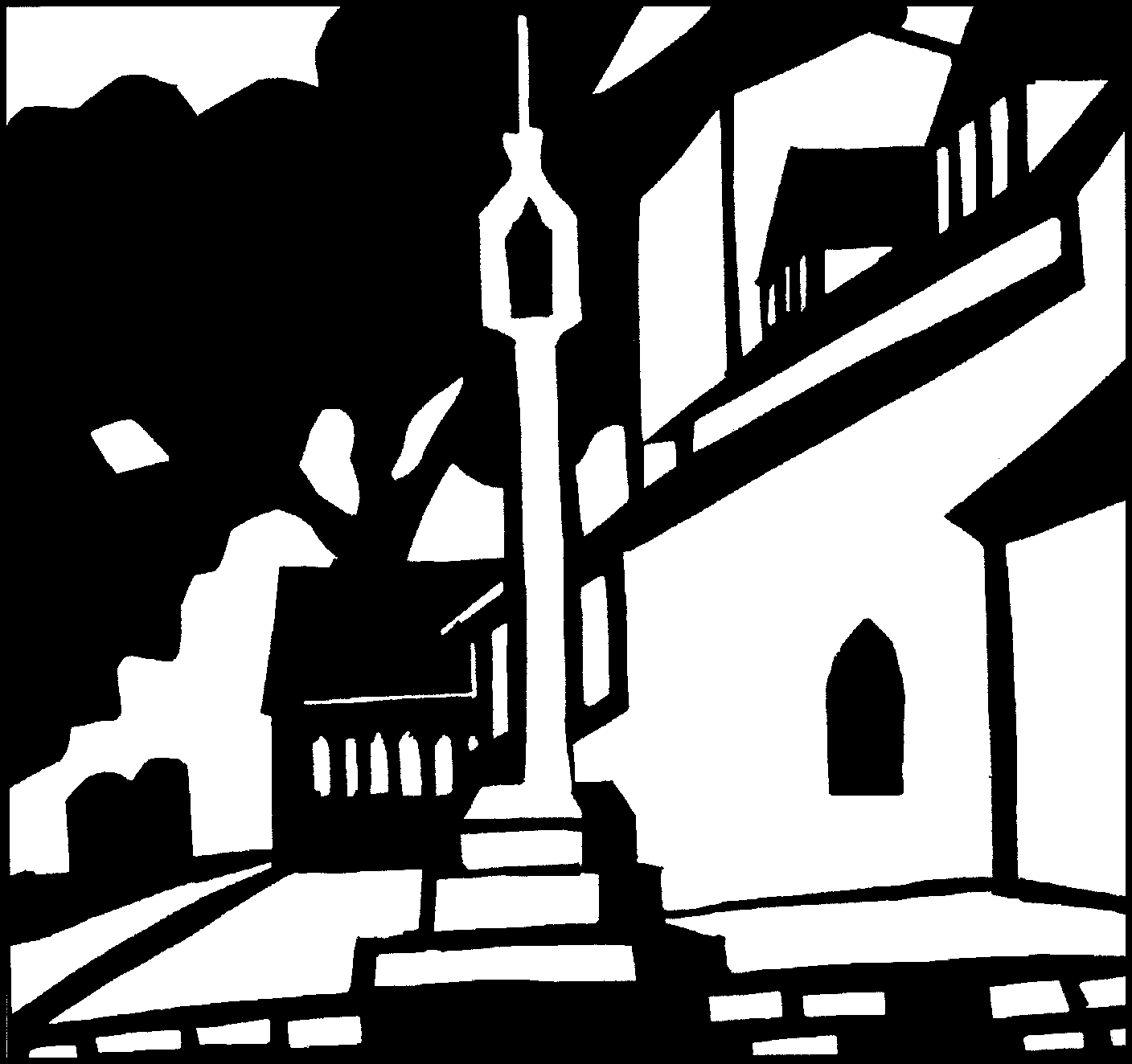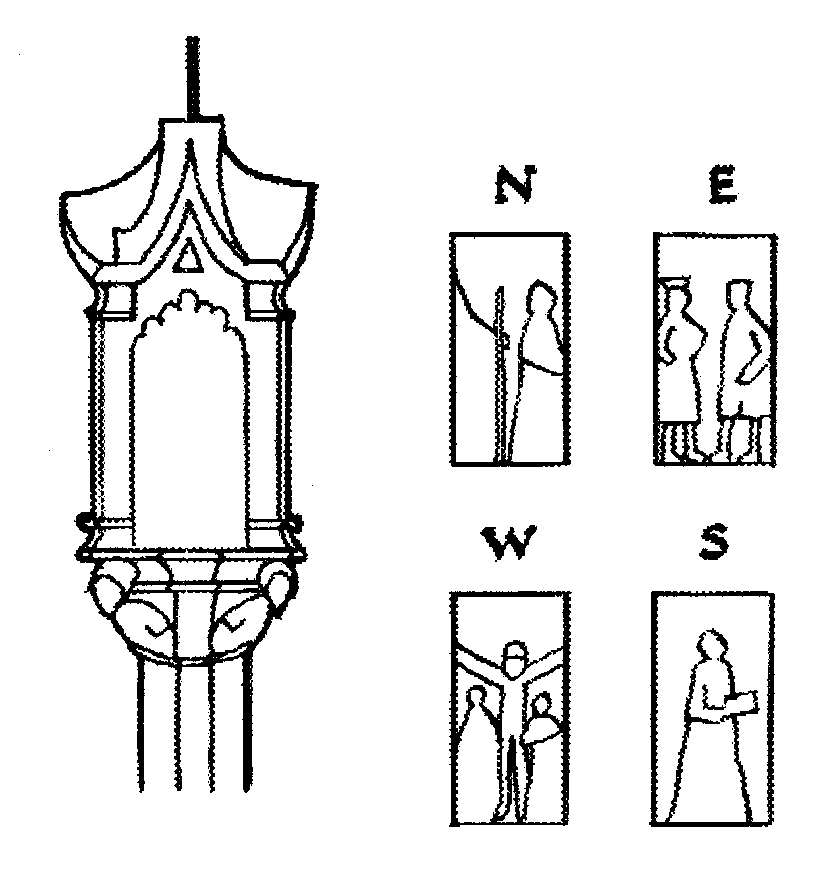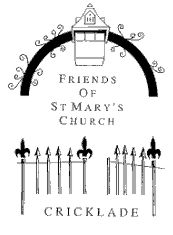The Churchyard Cross at St. Mary's
 The
cross in the churchyard at St Mary's is the most elaborate example of
medieval sculpture in the town. Certainly it stands in contrast to the
interior of St Mary's church which, apart from the Norman chancel arch
has very little ornamentation. Its importance in terms of the national
heritage is recognised by its status as both a 'scheduled ancient
monument' and a 'listed building'. What does the cross tell us about the
medieval history of the church?
The
cross in the churchyard at St Mary's is the most elaborate example of
medieval sculpture in the town. Certainly it stands in contrast to the
interior of St Mary's church which, apart from the Norman chancel arch
has very little ornamentation. Its importance in terms of the national
heritage is recognised by its status as both a 'scheduled ancient
monument' and a 'listed building'. What does the cross tell us about the
medieval history of the church?
Well, for a start, it isn't a cross in the
conventional sense at all. A small iron cross surmounts the sculpture,
but this is certainly a later addition, possibly Victorian. The
sculpture is technically a 'lantern', consisting of a square stone
column about twice as high as it is wide set on top of a tapering shaft,
giving the sculptor four panels to carve, each separated by a stone
'frame' supported on the backs of four angels. The sculpture stands on
an octagonal base of three steps.
No references are made to the lantern-cross in early
documents. The first representation of the cross is as late as 1810,
when it appears in the watercolour of the church by Buckler, now in the
Wiltshire County Archives. At that time the churchyard wall did not
exist, and the lantern formed the centrepiece of a small public space,
open to the street to the East, bounded to the North by the church, to
the West by the church porch, and to the South by the buildings of the
High Street. The first antiquarian description of the sculpture was made
in the late nineteenth century by Ponting who identified the West facing
carving as depicting the Crucifixion, and the South being the Assumption
of the Virgin. Ponting did not identify the East and North facing
panels, describing them only as a 'Queen and Knight' and a 'Bishop with
crozier'. Later accounts have for the most part followed Ponting's
description.
The fact that the Crucifixion faces away from the
street has led some commentators to suggest that the carved lantern has
at some date been reset the 'wrong' way round, and that this scene would
have originally faced the street. Certainly the cross has been repaired
at various dates.
 The
shaft is probably not original, but itself shows signs of patching. In
the early part of this century it was blown down in a storm. Parish
records include a book recording donations from the local parishioners
for its repair.
The
shaft is probably not original, but itself shows signs of patching. In
the early part of this century it was blown down in a storm. Parish
records include a book recording donations from the local parishioners
for its repair.
However, a little further research into the two
unidentified panels suggests that we are in fact seeing the lantern as
originally intended. The 'Queen and Knight' facing the street was
suggested to be a depiction of the Annunciation in the 1940s, and an
inspection of the Bishop with crozier shows there is a second figure or
group of figures to the West of the bishop, though much damaged. If this
is also a Biblical scene, it may in fact be the presentation of Christ
at the Temple, with the 'Bishop' being St Simeon. If this is the case,
then what we have here are not scenes from the life of Christ but from
the life of the Virgin Mary, starting at the Annunciation facing the
street, and proceeding anti-clockwise around the sculpture in
chronological sequence, ending with the Assumption.
Though damaged now, the style of what remains of the
carvings suggests a date for the lantern in the 14th century.
The presence of the lantern here at that date supports the assumption
that the church itself was dedicated to St Mary during the medieval
period, further strengthening the possible connection of the church with
Abingdon Abbey (also dedicated to St Mary) mentioned in an earlier
article. Abingdon Abbey was in fact a major centre of medieval
ecclesiastical sculpture. The famous 'Eleanor crosses' erected to
commemorate the death of Queen Eleanor, wife to Edward I, in the early
14th century (most famously at King's Cross in London) are
attributed to a monk from this abbey. It is tempting to think that our
lantern is perhaps also the gift of a major benefactor, perhaps
commissioned from the abbey that had such a strong connection with the
town.
Edmund Lee


 The
cross in the churchyard at St Mary's is the most elaborate example of
medieval sculpture in the town. Certainly it stands in contrast to the
interior of St Mary's church which, apart from the Norman chancel arch
has very little ornamentation. Its importance in terms of the national
heritage is recognised by its status as both a 'scheduled ancient
monument' and a 'listed building'. What does the cross tell us about the
medieval history of the church?
The
cross in the churchyard at St Mary's is the most elaborate example of
medieval sculpture in the town. Certainly it stands in contrast to the
interior of St Mary's church which, apart from the Norman chancel arch
has very little ornamentation. Its importance in terms of the national
heritage is recognised by its status as both a 'scheduled ancient
monument' and a 'listed building'. What does the cross tell us about the
medieval history of the church? The
shaft is probably not original, but itself shows signs of patching. In
the early part of this century it was blown down in a storm. Parish
records include a book recording donations from the local parishioners
for its repair.
The
shaft is probably not original, but itself shows signs of patching. In
the early part of this century it was blown down in a storm. Parish
records include a book recording donations from the local parishioners
for its repair.